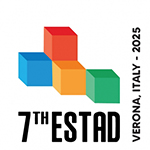Speaker
Description
The increased production of direct reduced iron (DRI) in recent years, particularly in the form of metallised DRI pellets and hot briquetted iron (HBI), is a promising development in global ferrous metallurgy. One of the special features of these products is the fact that, unlike scrap, they do not contain any impurities that are harmful to the production of steel and can therefore be used in the production of high-quality steels. However, one of the negative characteristics of DRI is its relatively high reactivity, which means that handling, transporting and storing DRI require special consideration and analysis, as in this case a reduction in the degree of metallisation can be observed. This study is being carried out in cooperative collaboration with the aim of coordinating the development of some new equipment at ArcelorMittal/CRM, TU Bergakademie Freiberg and Montanuniversität Leoben (MUL) in order to map the entire process chain, which includes experiments on ore reduction, briquetting and reoxidation (ReOx) of HBI. Therefore, several climate boxes with different climatic conditions (higher temperature, humid and saturated atmosphere) have been designed at MUL to investigate the impact of climatic conditions on the ReOx of laboratory-scale produced HBI samples with different properties. The samples are weighed regularly during the storage period of 12 weeks in order to detect possible reoxidation by means of weight gain. In addition, the chemical composition, the degree of metallisation and the morphology of the samples are analysed before and after the tests. Hydrogen generation is also monitored with pH measurement and additional hydrogen detection sensors. The aim of this study is to understand and describe the fundamental mechanism of HBI reoxidation for the safety of future handling and transport logistics.
